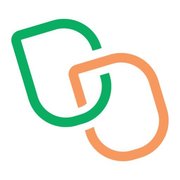
Best IoT Device Management Platforms 2025
What are IoT Device Management Platforms?IoT Device Management Platforms, sometimes referred to as “connected devices platforms”, allow businesses to remotely manage their fleets of Internet of Things (IoT) devices. This management entails provisioning and authentication of IoT devices, remote configuration and management, data collection and reporting, real-time monitoring, and over-the-air (OTA) software deployments for updates, patches, device onboarding/offboarding, etc. The two biggest ...
We’ve collected videos, features, and capabilities below. Take me there.
All Products
Learn More about IoT Device Management Software
What are IoT Device Management Platforms?
IoT Device Management Platforms, sometimes referred to as “connected devices platforms”, allow businesses to remotely manage their fleets of Internet of Things (IoT) devices. This management entails provisioning and authentication of IoT devices, remote configuration and management, data collection and reporting, real-time monitoring, and over-the-air (OTA) software deployments for updates, patches, device onboarding/offboarding, etc.
The two biggest factors of IoT device management platforms are the automated functions and security features. These products aim to make as many management functions automated. This enables scalability for hundreds or thousands of IoT devices, minimizing the resources necessary to manually manage the entire network of devices. These platforms also add another layer of IoT-specific security, both in securing individual devices and in preventing breaches from spreading across IoT devices.
IoT device management platforms should be able to unify management across multiple device types, vendors, locations, etc. This centralization poses several benefits. As previously discussed, it has massive scalability benefits. A related benefit is the time savings and efficiency improvements that a single management platform affords. Some platforms can also make IoT device management more accessible by limiting the coding knowledge necessary to manage IoT devices within the platform.
Open Source IoT Device Management Platforms
There is a wide range of open-source IoT device management platforms. The open-source format generally allows administrators and businesses to self-deploy and self-serve the platform if they prefer. However, platform vendors will usually offer customer support and extended services, such as implementation assistance. Organizations that don’t have a resident IoT expert will often want to utilize these services.
IoT Device Management Platforms Comparison
When comparing IoT device management platforms, consider these factors:
Device compatibility: While most products will be broadly compatible with common IoT device types and protocols, few will be universally compatible. Buyers should evaluate what kinds of devices, from which vendors, they will use the most, and ensure that the platforms on their shortlist can demonstrably support those devices.
User accessibility: IoT device management platforms’ user accessibility can be measured in two ways. First, there’s the efficiency and ease of use within the platform’s portal, especially when managing large amounts of devices. Another distinction to consider is how reliant each platform is on coding skills, which can tradeoff user capability with user accessibility.
Open-source vs. paid: Open-source is a popular option for this kind of platform, given how customized they have to be in-house in most circumstances. However, the open-source products will cost extra for support that is usually standard for paid platforms, and they may lag in the newest advancements or improvements. Either option is valid, but will vary in attractiveness case-by-case.
Start an IoT Device Management Platform Comparison
Pricing Information
Pricing is still extremely varied, and is made more complicated by the prevalence of open-source products. These platforms are free to download and are monetized via paid consulting and support, although specific pricing for those services is generally not public.
Paid platforms can range in pricing from $10/month for up to 20 things to hundreds of dollars a month for enterprise scaling. Some vendors, such as AWS, will segment pricing both by the volume of devices and by the kinds of actions being taken with or by each device on their platform.























